
The American Lotus, photo by Erie County Master Gardener Blog
Foraging can be fun but survival requires more daily calories in on-average than out or one moves towards starvation. To that end ancient man found many local caloric staples which here include cattails, acorns and the American lotus. All three are labor intensive but of the trio the lotus is my personal favorite and is in bloom now.
This past weekend I attended the Fifth Annual Mushroom Intensive in Gainesville put on by Mycol Stevens and crew. More about that in a moment. The journey there includes a mile of highway crossing what is called Paynes Prairie, a 12,000 acre “solution basin” that is it’s own unique ecosystem. Thousands of American lotus were in bloom, their huge yellow blossoms — the largest in North America — are unmistakable even while going 65 MPH. The prairie — a cyclical temporary lake — is fed by a creek from Newnan’s Lake which is also heavily populated with lotus and no doubt the species moved into the prairie eons ago.
If I had to vote for the major caloric staple that tastes the best and takes the least amount of work the American Lotus seeds would be my winner. The roots are also edible but they require a lot of wet, back-breaking work to harvest depending on the density of plants, the water level, and means of digging. Though once a major food source for Native Americans, the lotus is considered an annual, clogging nuisance in several places along the Mississippi River and tributaries. To me it is an attractive reminder that I will not starve. To read more about the American Lotus, go here.
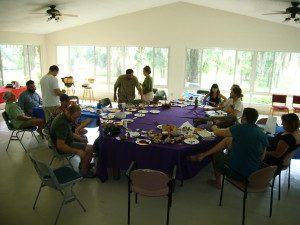
The Show & Smell table at the 5th Mushroom Intensive with dozens of species to study. Photo by Green Deane
The Fifth Annual Mushroom Intensive is now history. I am extremely pleased that I went and it is already on my calender for next year. Put it on yours. While I am quite confident with scores of edible plants my mushroom skills are limited to perhaps a dozen or so edible and medicinal ones. Thus anytime I have a chance to get my identification skills confirmed and improved I am there. We started out with some three dozen species to consider and then went on a field trip to find more. At least four species got cooked up for tasting, which is exactly the right time and place to do such a thing. You also get to hear the nitty gritty and inside hints about various mushrooms. And if you don’t have a microscope it was an opportunity to get some micro-views of identification elements such as spore shapes. Such events are a distillation of experience that help move you forward in your foraging goals. They are well worth attending about mushrooms (and other plants.)
Mushrooms are much maligned it the British and hence American culture yet they are so important for many reasons. It’s a reasonable forager’s goal to be comfortable with a few mushrooms and their role in the environment and as food. Within mushrooming there are also several levels of skills one can aspire to. My goal is to identify the some choice ones, the local toxic ones, and to appreciate their role and resource. On this particular occasion I got to not only talk mushrooms but to eat some I identified and took to the conference. Moving mushrooms forward, always something to learn, so a big thank you to Mycol for organizing the event and see you at the Sixth Annual Mushroom Intensive.
Botany is similar to law. Some things are “settled” others are not. Dandelions and apples are settled. They are certainly edible, and have been eaten for a long time by a lot of people in different populations. Yellow-blossomed Purslane, Portulaca oleracea, is settled. You can eat it. But what about other Portulaca, the ones that have red, pink and orange blossoms or large double blossoms of many colors? That is not settled, and it’s a question I hear often. There is a local species called Portulaca pilosa with cylindrical leaves and tufts of white hair. It tastes bad to me and irritates my stomach yet some say it is edible. I’ve met beginners who say they eat it but to my knowledge I have not met an experienced forager who eats it (and who would not misidentify it for something else as beginners might.) The many-colored cultivated varieties are often seen in garden shops for sale with names such as Toucan Hot Mix and Heirloom 2000. Are they edible? I don’t know, and experienced forager Dick Deurerling said he didn’t know either when I asked him some 20 years ago. It’s not a dangerous family and I suppose I should try some but intentionally getting ill is not fun. That’s why only the common one is on my site as an edible. But back to the original point: Not all things are settled in botany and that includes some of the plants we forage for.
I will have classes on opposite sides of the state this weekend, Melbourne and Sarasota. Then there is a break for two weeks while I swing up through the Carolinas with my first local class again in mid-August at Mead Garden in Winter Park. Also if anyone knows of a good place to meet and greet in Boone, North Carolina, please let me know.
Saturday, July 26th, Wickham Park: 2500 Parkway Drive, Melbourne, FL 32935-2335.
Sunday, July 27th, Red Bug Slough Preserve, 5200 Beneva Road, Sarasota, FL, 34233. 9 a.m.
Saturday, August 16th, Mead Garden,1500 S. Denning Dr., Winter Park, FL 32789, 9 a.m.
On the Green Deane Forum we post messages and pictures about foraging all year long. There’s also a UFO page, for Unidentified Flowering Objects so plants can be identified. Recent topics include: Plants as Medicine, the plant Indian Warrior, the Flora of China, how to compare, plants to identify, how to keep figs unblemished, the paleo diet, unidentified trees, Chenopodiums, which species of ground cherry, Linguistic Overdive (in the social lounge) and Black Nightshade. The link to join is on the right hand side of this page.
My foraging videos do not include alligators but they do cover dozens of edible plants in North America. The set has nine DVD. Each DVD has 15 videos for 135 in all. Some of these videos are of better quality than my free ones on the Internet. They are the same videos but many people like to have their own copy. I burn and compile the sets myself so if you have any issues I handle it. There are no middle foragers. And I’m working on adding a tenth DVD. To learn more about the DVDs or to order them click here.
Here’s a reminder that locally the Podocarpus is fruiting. Remember we do not eat the seed on the end. It is the fleshy aril that is edible when they are dark red or purple. They can be eaten out of hand or made in to wine, jelly and syrups. I have several pounds being made into wine. Also note they dehydrate well and resemble raisins. Again, do not eat the seed on the end. It is mildly toxic. It is the fleshy aril that we eat. To learn more about the Podocarpus go here.
To donate to the Green Deane Newsletter click here.

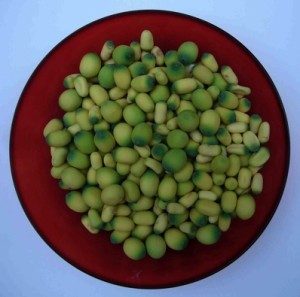
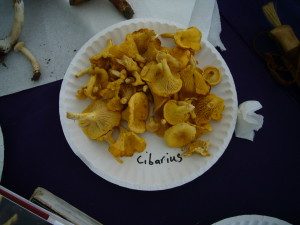
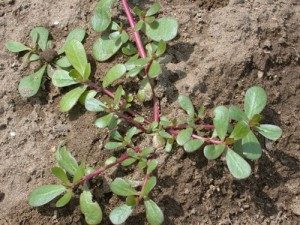
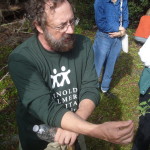


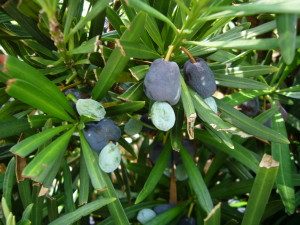

curious: can i eat lotus root and seeds no matter the condition of the water (if washed well, etc)?
i.e., does the plant take in polluted compounds or no?
or if it does, are these toxics converted to non-toxics?
i ask because we have a small pond (cement) and fountain here and are growing lotus as well as watercress. there is stringy green algae, and likely other algae(i don’t know if it blue-green or not), and bird and fish poop, etc. hoping i can eat the lotus and watercress still, but am scared to try.
Part of foraging is the skill –art? — of figuring out if the soil or water is wholesome. Plants that grow in polluted places usually are polluted. Some species are worse at it than others. Biodegradable stuff isn’t much of an issue — like bird droppings which is actually fertilizer — but more the man-made stuff one should avoid.
I remember pre-Disney era in Central Florida when I grew up on the west side of Orlando. There was a large lake-front estate on Silver Star Road between Pine Hills and Ocoee, that had a large mature podocarpus hedge about ten or twelve feet high. It was well maintained and pruned and every summer the herdge was covered with fruit. I ask permission from the caretaker to harvest the bountiful supply and he elbowed his co-worker and said, “This Nimrod tinks you can eat podocarpus.” They both had a good laugh while I picked buckets full and nibled along as I picked.The next year I gave him a jar of jelly and that was my last harvest. From then on I would see the workers picking the fruit as I drove by. Well, live and learn. I have also made wine from them and found it to be very subtle in flavor and boquet.
Enjoy your trip to N.C.
As they say in Bridge, those who know go. It also must be sad to remember Orlando before Disney. My home town of Freeport Maine totally disappeared under the expansive onslaught of LL Bean inc. The funeral home is now a hamburger joint, a friend’s house is a pottery outlet… very rapacious…
Just made a donation, please keep up the good work.
I grow up with wild edibles, and my teachers were mother nature and my father. Thanks to your website, Dean, I got answers to a lot of questions from my childhood. There is one more: Past weekend I picked very juicy delicious Purslane. When I came home I noticed I had a lot of seeds at the bottom of the bag. Are they edible as well?
Yes, Purslane seeds are edible.
Thank you so much for you continuing dedication to educating us in foraging. Who knows when the information we learn here will save our lives. Your input is invaluable!
Your Fan, Doris Jones
I’ve enjoyed reading the Newsletter as usual and gone through your article “ American Lotus: Worth Getting Wet For “. I was contemplating on: “ When nature finds the right environment, plants find their way there, or come out of dormancy. “ It has brought to my mind the holy verse “ He is Allah who sends forth the winds, so they raise up the clouds, and We drive them to a land that is dead, and revive the earth therewith after its death: even so ( similarly will be ) the Resurrection, “ May I also add that the Sudanese and Egyptians call this beautiful plant “ Arous El Neel – vernacular – meaning bride of the Nile ,or sometimes “ Wurd El Neel “ which means rose of the Nile. With respect to this may I give the recent very activating and emotional quotation of Adrian Higgins of The Washington Post “ Anyone who is not moved at the sight of a lutus pond in peak bloom needs to check his pulse. “